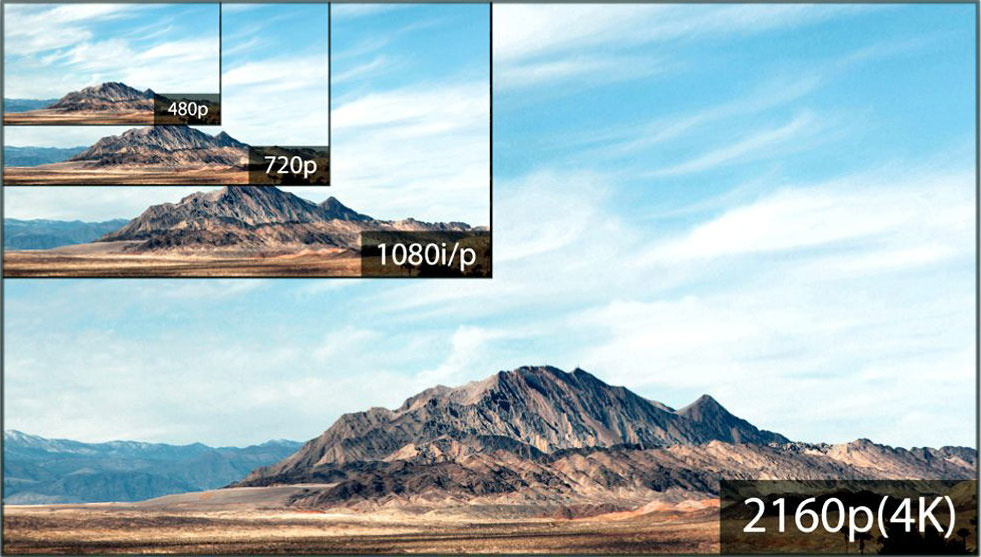Video resolution on a dashcam explained
![]() When filming, reality is basically converted into something digital, a video. So a video is actually a digital version of an event, in the case of a dashcam, for example, a drive or incident. A video consists - just like a photograph - of a lot of "pixels," actually lots of very small dots that make up the video. The video resolution indicates how many pixels the video consists of. The more pixels there are, the more detailed the video is. Therefore, videos with a high resolution are often clearer than videos with a low resolution and you can also zoom in on them better, for example.
When filming, reality is basically converted into something digital, a video. So a video is actually a digital version of an event, in the case of a dashcam, for example, a drive or incident. A video consists - just like a photograph - of a lot of "pixels," actually lots of very small dots that make up the video. The video resolution indicates how many pixels the video consists of. The more pixels there are, the more detailed the video is. Therefore, videos with a high resolution are often clearer than videos with a low resolution and you can also zoom in on them better, for example.
True 4K, 2K, QuadHD, FullHD, HD Ready, VGA
 You get the number of pixels of a video by multiplying the number of horizontal pixels by the number of vertical pixels. So in theory, a huge number of resolutions are possible. Because the "aspect ratio" - the ratio of the number of horizontal and vertical pixels - is fixed for each resolution, fortunately there are only a limited number of resolutions to distinguish.
You get the number of pixels of a video by multiplying the number of horizontal pixels by the number of vertical pixels. So in theory, a huge number of resolutions are possible. Because the "aspect ratio" - the ratio of the number of horizontal and vertical pixels - is fixed for each resolution, fortunately there are only a limited number of resolutions to distinguish.
The resolution is indicated by different terms you've probably heard of: True 4K, 2K, FullHD, HD Ready etc. For example, "FullHD" stands for a resolution of 1920x1080 pixels and "True 4K" stands for a resolution of 3840x2160 pixels.
Higher resolution = better quality?
 It is often thought that higher resolution is always better. In principle, a higher resolution can produce a better image, but in practice this is not always the case. In theory, you can record an all-black video in True 4K resolution, but of course you won't see much on that. There are a lot of 'FullHD' dashcams on the market with very poor image quality on which you can barely read license plates. Therefore, a 720p 'HD Ready' video may be better than a FullHD video.
It is often thought that higher resolution is always better. In principle, a higher resolution can produce a better image, but in practice this is not always the case. In theory, you can record an all-black video in True 4K resolution, but of course you won't see much on that. There are a lot of 'FullHD' dashcams on the market with very poor image quality on which you can barely read license plates. Therefore, a 720p 'HD Ready' video may be better than a FullHD video.
This does not change the fact that high-resolution videos are often better than lower-resolution videos. However, the quality is mainly determined by the image sensor used in combination with the chip or processor. The combination of these two have the most influence on the quality and you can actually see the resolution as a result of these two. With higher resolution videos such as True 4K, often a better image sensor and processor is used so the quality is automatically better as well.
True 4K vs. 4K
There is some confusion surrounding the term '4K' which is often used interchangeably by manufacturers and therefore us. 4K actually means "4000," which stands for the nearly four thousand horizontal pixels in videos with a resolution of 3840x2160 pixels. Before 4K became an industry standard, a common high resolution was 2880x2160 pixels. This was a lot higher than the common FullHD resolution and this was somewhat mistakenly referred to as "4K.
'4K' is not a protected term and therefore many manufacturers often still list '4K' as a specification on many dashcams. To avoid confusion, we also refer to these dashcams as 4K. For dashcams with a resolution of 3840x2160 pixels we use the term 'True 4K' to indicate that this is the highest resolution.






